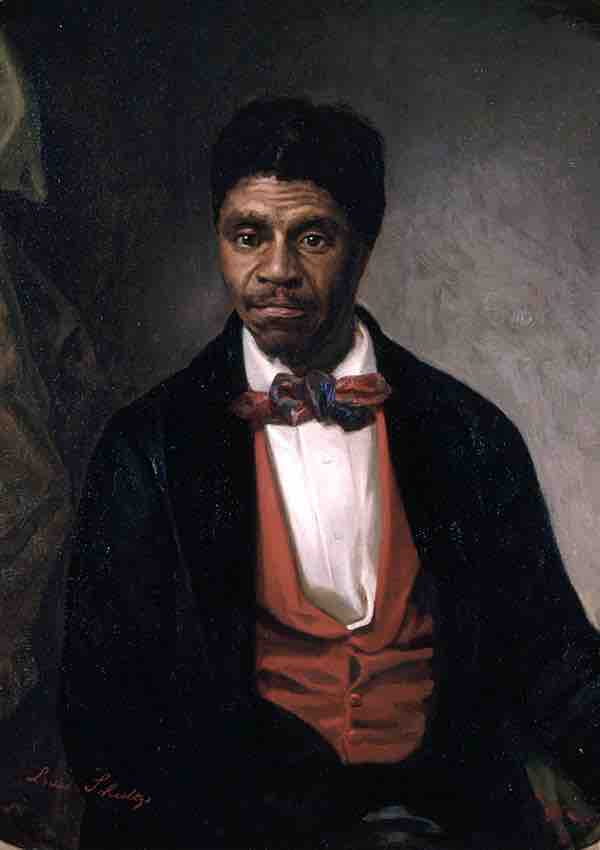Dred Scott v. Sandford (1857), also known as the Dred Scott decision, was a ruling by the U.S. Supreme Court stating that people of African descent brought into the United States and held as slaves were not protected by the Constitution and were not U.S. citizens. The Dred Scott decision was particularly significant because the Court concluded that Congress had no authority to prohibit slavery in federal territories (nullifying the Missouri Compromise) and that, because slaves were not citizens, they could not sue in court. Furthermore, the Court ruled that slaves, as chattel or private property, could not be taken away from their owners without due process.
In reaching this decision, Chief Justice Roger Taney had hoped to settle the issue of slavery in the United States, but it had the opposite effect. The decision was fiercely debated across the country and contributed to Abraham Lincoln's success in the presidential election in 1860 as opposition to the Dred Scott decision and the prohibition of further expansion of slavery became integral to the Republican Party platform. The court's decision was so contentious that some historians go as far as to suggest that the Dred Scott decision caused the Civil War.
Background
Dred Scott was born a slave in Virginia sometime between 1795 and 1800. In 1820, he followed his owner, Peter Blow, to Missouri. In 1832, Blow died and U.S. Army Surgeon Dr. John Emerson purchased Scott and took him to Illinois, a free state. In 1836, Scott was again moved to the Wisconsin territory, an area where slavery was "forever prohibited" under the Missouri Compromise. In 1846, Dred attempted to purchase his freedom, but the Emerson family refused, prompting Scott to seek legal recourse.

Dred Scott
Portrait of Dred Scott.
Over the next 11 years, Scott first won, and then lost, his case as it moved from state to federal courts on appeal, and eventually to the Supreme Court. In 1857, when the Supreme Court heard Dred Scott’s case, it was faced with several controversial questions that were of great significance to an increasingly polarized country. Were black people considered citizens of the United States and therefore eligible to pursue suits in court? Did residence in a free state render a slave free? Most significantly, did Congress have the constitutional authority to prohibit slavery in any state or territory? With proslavery and antislavery supporters pushing for a resolution to sectional conflict over the issue, the Court used its authority in the Dred Scott case more to render a final ruling on the Missouri Compromise rather than to decide the fate of a single man.
Decision
The Supreme Court ruling was handed down on March 6, 1857, just two days after James Buchanan's inauguration. Chief Justice Roger Taney delivered the opinion of the Court with each of the concurring and dissenting justices filing separate opinions. In total, six justices agreed with the ruling. The Court ruled that Scott was not a citizen of the United States, that residence in a free territory did not make Scott free, and that Congress had no constitutional authority to prohibit slavery in any territory. The decision effectively overturned all of the political compromises negotiated between Northern and Southern congressional representatives over the past 30 years in a significant victory for proslavery factions.
Taney based his ruling in part on his interpretation of how the authors of the U.S. Constitution would have perceived Scott as a man of African descent, stating that a black individual would be perceived too inferior to be granted equal rights on the same level as a white person. He also stated that any act of Congress denying a slaveholder his property (i.e., his slave) was to be considered unconstitutional on the basis of the Fifth Amendment. This marked only the second time the Supreme Court had found an act of Congress, in this case the Missouri Compromise, to be unconstitutional.
Consequences
Although Chief Justice Roger Taney believed that the decision would answer the slavery question once and for all by transforming a contested political issue into a matter of settled law, it produced the opposite result. In the North, it fueled claims of a "slave power" conspiracy with President Buchanan, a Democrat, and the Supreme Court, controlled by a Democratic majority, working to benefit the interests of Southern slaveowners. The decision led many Democrats to start supporting the Republican Party, drawn in by their opposition to the expansion of slavery into new federal territories. In the South, the decision encouraged proslavery, secessionist elements to make bolder demands in Congress.
Many historians consider the Dred Scott decision to be one of the direct causes of Southern secession and the Civil War. It strengthened the Republican Party in the North by creating a platform against the expansion of slavery outside its traditional Southern boundaries and signaled to the South that Northern abolitionists would not quietly accept the Court's ruling on the matter, leading many Southerners to embrace secession as a defensive measure to protect their interests.